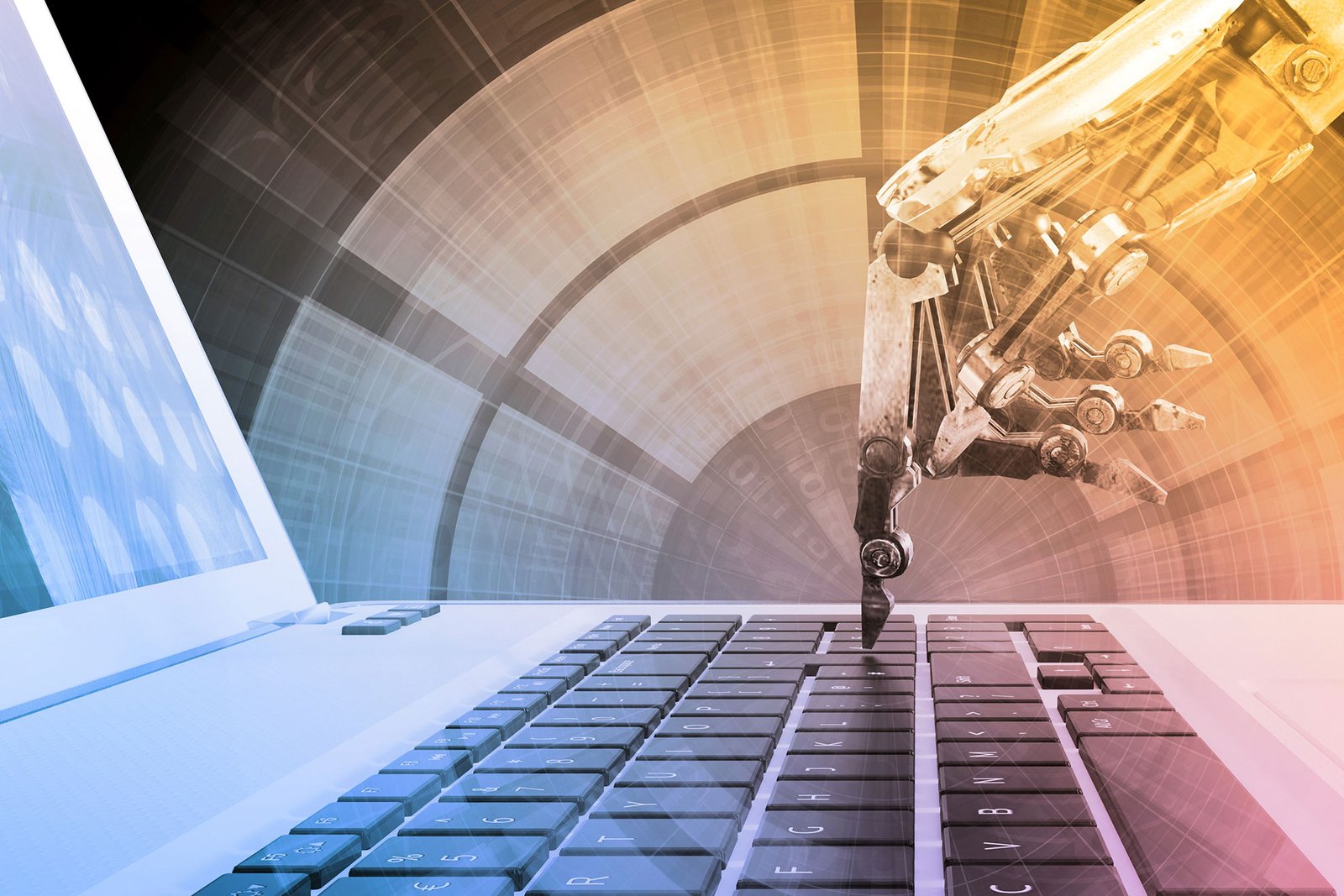Tools & Platforms
Physicians embrace AI note-taking technology — Harvard Gazette

AI-driven scribes that record patient visits and draft clinical notes for physician review led to significant reductions in physician burnout and improvements in well-being, according to a Mass General Brigham study of two large healthcare systems.
The findings, published in JAMA Network Open, draw on surveys of more than 1,400 physicians and advanced practice providers at both Harvard-affiliated Mass General Brigham and Atlanta’s Emory Healthcare.
At MGB, use of ambient documentation technologies was associated with a 21.2 percent absolute reduction in burnout prevalence at 84 days, while Emory Healthcare saw a 30.7 percent absolute increase in documentation-related well-being at 60 days.
50% Physician burnout linked to maintaining electronic patient files
“Ambient documentation technology has been truly transformative in freeing up physicians from their keyboards to have more face-to-face interaction with their patients,” said study co-senior author Rebecca Mishuris, chief medical information officer at MGB, a faculty member at Harvard Medical School, and a primary care physician in the healthcare system. “Our physicians tell us that they have their nights and weekends back and have rediscovered their joy of practicing medicine. There is literally no other intervention in our field that impacts burnout to this extent.”
Physician burnout affects more than 50 percent of U.S. doctors and has been linked to time spent in electronic health records, particularly after hours. There is additional evidence that the burden and anticipation of needing to complete their appointment notes also contributes significantly to physician burnout.
“Burnout adversely impacts both providers and their patients who face greater risks to their safety and access to care,” said Lisa Rotenstein, a co-senior study author and director of The Center for Physician Experience and Practice Excellence at Brigham and Women’s Hospital. She is also an assistant clinical professor of medicine at the UCSF School of Medicine. “This is an issue that hospitals nationwide are looking to tackle, and ambient documentation provides a scalable technology worth further study.”
“Our physicians tell us that they have their nights and weekends back and have rediscovered their joy of practicing medicine.”
Rebecca Mishuris, Mass General Brigham
Qualitative feedback from users touted that ambient documentation enabled more “contact with patients and families,” improvements in their “joy in practice,” while recognizing its potential to “fundamentally [change] the experience of being a physician.” However, some users felt it added time to their note-writing or had less utility for certain visit types or medical specialties. Since the pilot studies began, the AI technologies have evolved as the vendors make changes based on user feedback and the large language models that power the technologies improve themselves through additional training, warranting continued study.
The researchers analyzed survey data from pilot users of ambient documentation technologies at two large health systems. At Mass General Brigham, 873 physicians and advanced practice providers were given surveys before enrolling, then after 42 and 84 days. About 30 percent of users responded to the surveys at 42 days, and 22 percent at 84 days. All 557 Emory pilot users were surveyed before the pilots and then at 60 days of use, with an 11 percent response rate. Researchers analyzed the survey results quantifying different measures of burnout at Mass General Brigham and physician well-being at Emory Healthcare.
The study authors added that given that these were pilot users and there were limited survey response rates, the findings likely represent the experience of more enthusiastic users, and more research is needed to track clinical use of ambient documentation across a broader group of providers.
Mass General Brigham’s ambient documentation program launched in July 2023 as a proof-of-concept pilot study involving 18 physicians. By July 2024, the pilot, which tested two different ambient documentation technologies, expanded to more than 800 providers. As of April 2025, the technologies have been made available to all Mass General Brigham physicians, with more than 3,000 providers routinely using the tools. Later this year, the program will look to expand to other healthcare professionals such as nurses, physical and occupational therapists, and speech-language pathologists.
“Ambient documentation technology offers a step forward in healthcare and new tools that may positively impact our clinical teams,” said Jacqueline You, lead study author and a digital clinical lead and primary care associate physician at Mass General Brigham. “While stories of providers being able to call more patients or go home and play with their kids without having to worry about notes are powerful, we feel the burnout data speak similar volumes of the promise of these technologies, and importance of continuing to study them.”
Ambient documentation’s use will continue to be studied with surveys and other measures tracking burnout rates and time spent on clinical notes inside and outside of working hours. Researchers will evaluate whether burnout rates improve over time as the AI evolves, or if these burnout gains plateau or are reversed.
This project received financial support from the Physician’s Foundation and the National Library of Medicine of the National Institutes of Health.
Source link
Tools & Platforms
Your browser is not supported
usatoday.com wants to ensure the best experience for all of our readers, so we built our site to take advantage of the latest technology, making it faster and easier to use.
Unfortunately, your browser is not supported. Please download one of these browsers for the best experience on usatoday.com
Tools & Platforms
iShares Future AI & Tech ETF (NYSEARCA:ARTY) Surges 27.6% in 2025 — Is It a Buy?

ARTY delivers strong tech exposure with 83% allocation to AI leaders, but volatility and valuations test investor conviction | That’s TradingNEWS
8/30/2025 8:54:36 PM
Tools & Platforms
Emperor Musk’s AI Clothes – Will Lockett’s Newsletter

Musk has been parading around in his AI clothes for a while now. With the amount he screams and shouts about AI, you’d think he invented it. Of course, like everything else Musk peddles, he had nothing to do with its invention or development, except for underpaying and overworking his engineers and being an awful, overpromising PR man. However, people aren’t just noticing that Musk’s clothes are non-existent — they are also starting to point and laugh at his skid marks and the “I Love the Nazi Man” tattoo down his back. Why? Because he just can’t seem to get his AI up and working. And there is no little blue pill to remedy this situation.
Take, for example, Tesla’s hilariously crap Robotaxi rollout. The media at large is only just cottoning on to it being a huge PR stunt.
I have gone on ad nauseam about why Tesla’s self-driving cars are completely inadequate, so if you want to know the details, read my previous article here. But the helicopter view is that, unlike other autonomous vehicles, Tesla’s system has zero redundancy or safety nets and requires a nearly 100% accurate AI — which categorically can’t exist — to be even remotely safe.
Tesla is painfully aware of this fatal flaw, with Tesla engineers whistleblowing their concerns about it to the media (read more here) and the DOJ opening an investigation (read more here). So I, along with countless other commentators, was pretty damn relieved to find out that Tesla’s Robotaxis had safety drivers. There was even mention of remote workers being able to take control of the car and drive it safely in the case of a critical disengagement.
But this kind of system isn’t impressive enough for Musk. Any Uber or Lyft driver with a Tesla who wastes their money on FSD can do the exact same thing. There is no social or investor kudos to be gained for Tesla or Musk here. And here is a hint: Musk doesn’t make money from Tesla sales. After all, his $50 billion pay packet (which is now less, thanks to Musk tanking Tesla’s valuation) was the equivalent of him getting $10,000 for every Tesla ever sold! Tesla makes substantially less profit from every car sold than that.
So, what do you do if you have bet your entire company’s valuation on autonomous technology that you simply can’t deliver on?
Fudge it.
Tesla put the safety driver in the passenger seat! Because, look, it’s a self-driving car — there is no one in the driver’s seat!
This is a dangerous move that offers no benefit other than optics.
Rather than being able to properly take over the car and drive it to safety, the only thing these safety drivers could do was press a button to bring the vehicle to a stop. Which, as anyone with a driving licence will tell you, is not always the safest option! Particularly when you consider that Robotaxis have been spotted driving into lanes of oncoming traffic.
Yet, this bafflingly shite decision wasn’t really reported on. Or at least it wasn’t until a video surfaced a few days ago that showed FSD failing and a safety driver being forced to exit the vehicle in the middle of traffic to take the driver’s seat and regain control. (watch it here).
This shows just how wildly dangerous Tesla’s Robotaxis are.
The safety driver had to take a serious risk to take control of the car. Not only that, but this incident suggests there are no remote operatives capable of taking over when things go wrong. That has been a core safety feature of all developing self-driving ride-hailing services, such as Waymo and Cruise, since day one and is routinely used to keep passengers safe. The fact that this is absent for Robotaxis, which Tesla already know have a far, far higher critical disengagement rate than any other self-driving ride-hailing service, could easily be seen as insanely negligent.
Musk is comfortable putting other people — not just the safety driver, but paying passengers and the public — in danger, all for a crappy PR stunt to cover up how bad his self-driving system actually is. And the media at large, as well as public consensus, are beginning to catch up to this horrifying fact.
However, Musk’s AI woes go far, far deeper than that.
-
Tools & Platforms3 weeks ago
Building Trust in Military AI Starts with Opening the Black Box – War on the Rocks
-

 Ethics & Policy1 month ago
Ethics & Policy1 month agoSDAIA Supports Saudi Arabia’s Leadership in Shaping Global AI Ethics, Policy, and Research – وكالة الأنباء السعودية
-

 Events & Conferences3 months ago
Events & Conferences3 months agoJourney to 1000 models: Scaling Instagram’s recommendation system
-

 Jobs & Careers2 months ago
Jobs & Careers2 months agoMumbai-based Perplexity Alternative Has 60k+ Users Without Funding
-

 Business1 day ago
Business1 day agoThe Guardian view on Trump and the Fed: independence is no substitute for accountability | Editorial
-

 Funding & Business2 months ago
Funding & Business2 months agoKayak and Expedia race to build AI travel agents that turn social posts into itineraries
-

 Education2 months ago
Education2 months agoVEX Robotics launches AI-powered classroom robotics system
-

 Podcasts & Talks2 months ago
Podcasts & Talks2 months agoHappy 4th of July! 🎆 Made with Veo 3 in Gemini
-

 Podcasts & Talks2 months ago
Podcasts & Talks2 months agoOpenAI 🤝 @teamganassi
-

 Jobs & Careers2 months ago
Jobs & Careers2 months agoAstrophel Aerospace Raises ₹6.84 Crore to Build Reusable Launch Vehicle





















